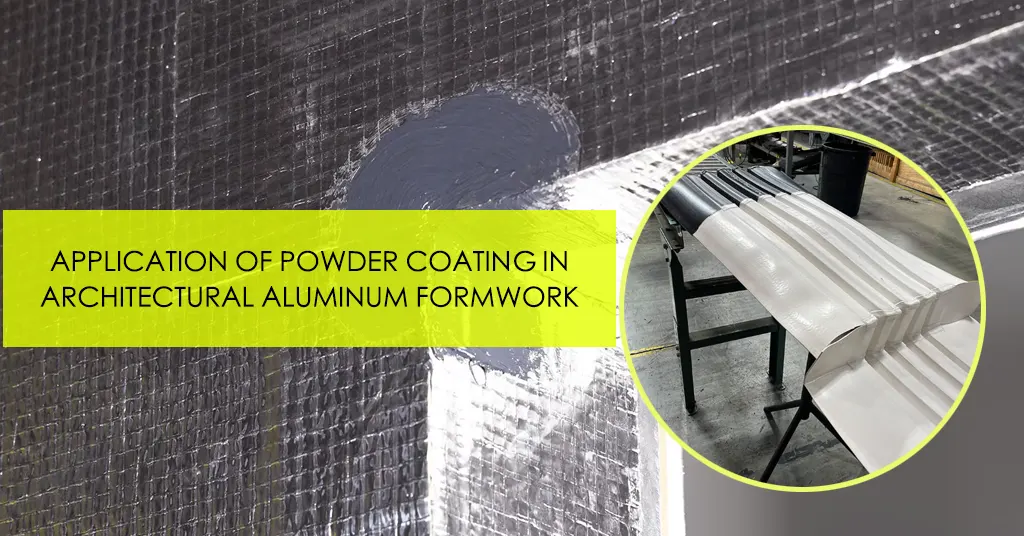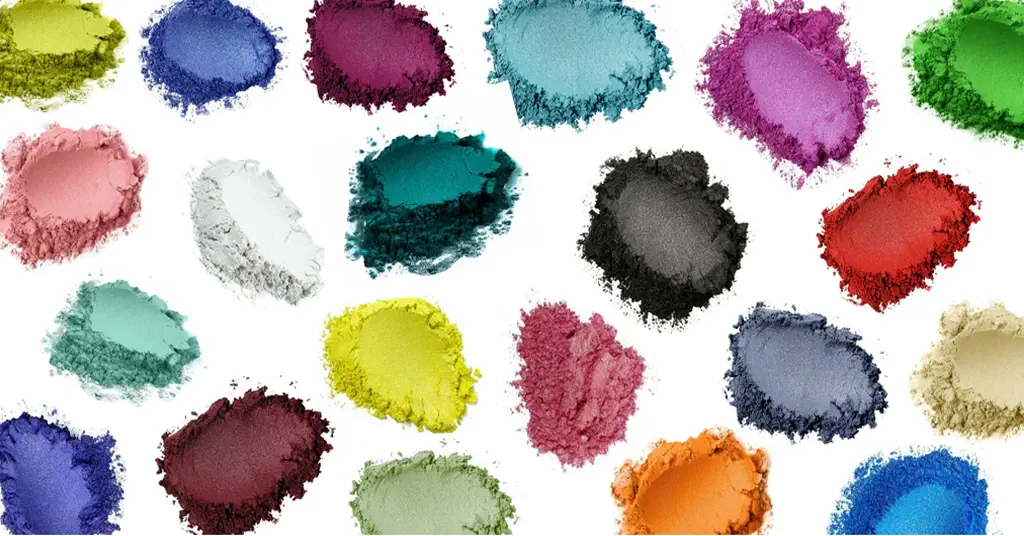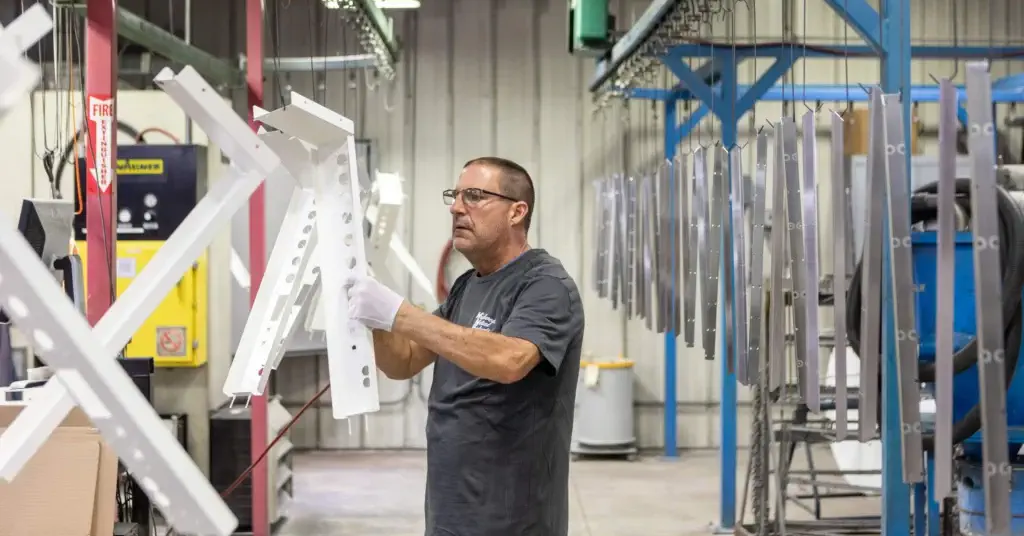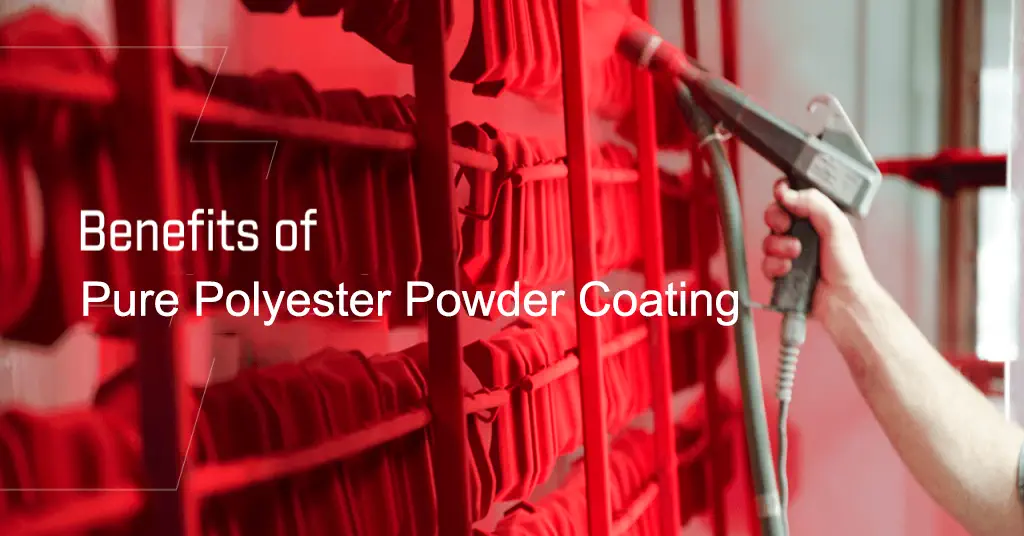Application of powder coating in architectural aluminum formwork
Table of Contents
1. Selection of types of powder coatings
From the application fields and usage environment of aluminum formwork, we can understand that the coating used in its coating must have a certain degree of weather resistance to prevent the coating from powdering when exposed to the sun outdoors; it also needs to have high alkali resistance and high water resistance to prevent pouring After concrete corrodes the aluminum formwork, thereby reducing the flatness of the concrete surface and the service life of the aluminum formwork; there is a large amount of sand and stones in the concrete, which can easily scratch and impact the coating surface during the pouring process, causing damage to the coating and affecting its protective effect. and demoulding effect, so the coating must have high hardness and high wear resistance; in addition, in order to improve the demoulding effect, the coating surface needs to have low surface tension and strong hydrophobicity to ensure that the concrete is difficult to adhere to during demoulding. On the coated surface, it can be reused after simple cleaning. The performance characterization of powder coatings for architectural aluminum formwork is shown in Table 1.
| Performance | Reference standards | Assessment indicators |
| Coating appearance | Visual inspection | Flat and smooth |
| Alkali resistance (saturated sodium hydroxide) | GB/T 9265-2009 | No blistering or peeling of the coating after 500 hours |
| Alkali resistance (30% sodium hydroxide) | GB/T 9265-2009 | 72 hours without blistering or peeling of the coating |
| Concrete demolding test (40-50 times) | No mucosa, coating does not detach | |
| Impact performance (50kg. em) | GB/T 1732-1993 | Positive passage |
| Adhesion | GB/T 9286-1998 | 0 |
| Flexibility / mm | GB/T 1731-1993 | ≤2 |
| Hardness | GB/T 6739-2006 | 4H-5H |
| Xenon lamp aging (1000h) | GB/T 1865-2009 | Light retention rate above 50%, adhesion level 0 |
Table 1 ~ Performance characterization of powder coatings for building aluminum formwork

2. Effects of different acrylic film-forming systems on powder coating properties
There are many varieties of acrylic powder coatings, but from the perspective of storage stability and comprehensive performance of the coating film, industrial weather-resistant acrylic powder coatings are mainly polycarboxylic acid curing systems for glycidyl acrylic resins and blocked polyisocyanates for hydroxy acrylic resins. Curing system. This article examines several weather-resistant acrylic film-forming systems, and the results are shown in Table 2.
| Acrylic film-forming system | |||
| Project | Glycidyl based acrylic resin / polyacrylic acid | Glycidyl based acrylic resin / carboxyl based polyester resin | Hydroxyacrylic resin / blocked polyisocyanate |
| Alkali resistance (saturated calcium hydroxide) | 500h coating without bubbles or peeling | ||
| Alkali resistance (30% sodium hydroxide) | 72h coating foaming and peeling | 72h coating without bubbles or peeling | |
| Concrete demolding test | 31 demolding coatings peeling off | 30 demolding coatings peeling off | 28 demolding coatings peeling off |
| Impact performance (50kg. cm) | 30kg.cm front pass | 40kg.cm front pass | |
| Adhesion level | 0 | ||
| Flexibility | 2 | ||
| Hardness | HB | 1H | 1H |
| Xenon lamp aging (1000h) | 92% light retention rate, adhesion level 0 | 90% light retention rate, adhesion level 0 | 89% light retention rate, adhesion level 0 |
Table 2 ~ Coating performance of acrylic film-forming systems with different weather resistance
3. The influence of resin on the performance of powder coating
| Glycidyl based acrylic resin | |||
| Project | A | B | C |
| Glass transition stability / ℃ | 56 | 68 | 60 |
| Epoxy equivalent | 610 | 750 | 980 |
| Alkali resistance (saturated calcium hydroxide) | 500h coating without bubbles or peeling | ||
| Alkali resistance (30% sodium hydroxide) | 72h coating foaming and peeling | 72h coating without bubbles or peeling | |
| Impact performance (50kg. cm) | 40kg.cm front pass | 50kg.cm front pass | |
| Adhesion level | 0 | 1 | 0 |
| Flexibility | 2 | ||
| Hardness | HB | 2H | 2H |
Table 3 ~ Coating properties prepared by different glycidyl based acrylic resins
| Carboxyl polyester resin | |||
| Project | A | B | C |
| Glass transition stability / ℃ | 71 | 76 | 66 |
| Acid value | 26 | 28 | 24 |
| Alkali resistance (saturated calcium hydroxide) | 500h coating without bubbles or peeling | ||
| Alkali resistance (30% sodium hydroxide) | 72h coating foaming and peeling | 72h coating without bubbles or peeling | |
| Impact performance (50kg. cm) | 50kg.cm front pass | 40kg.cm front pass | 50kg.cm front pass |
| Adhesion level | 0 | 0 | 0 |
| Flexibility | 2 | ||
| Hardness | 2H | 2H | 1H |
Table 4 ~ Coating performance of different hydroxyl polyester resins prepared
It can be seen from the results in Table 3 and Table 4 that choosing glycidyl acrylic resin and carboxyl polyester resin with high glass transition temperature and high functionality can significantly improve the hardness of the coating film, but the high glass transition temperature of the resin will cause The brittleness of the coating will increase, and the adhesion and impact performance will decrease to a certain extent, so in the end we chose glycidyl acrylic resin B and carboxyl polyester resin a.
4. The influence of fillers on the performance of powder coatings
| Filler | ||||
| Project | / | Barium sulfate | Silicon carbide micro powder | Porous quartz powder |
| Impact performance(50 kg.cm) | Positive passage | Frontal fissure | Frontal fissure | Positive passage |
| Hardness | 2H | 2H | 4H | 4H |
Table 5~Performance of Powder Coatings with Different Fillers
5. Effect of additives on powder coating properties
Conclusion
Powder coating offers a promising alternative to traditional release agents for architectural aluminum formwork. Its durability, demolding efficiency, and worker safety make it a compelling choice. Careful selection of acrylic systems, resins, fillers, and additives is crucial for optimal performance. By embracing powder coating, construction companies can streamline project timelines and enhance worker well-being.

Erik
Doctor of Chemical Engineering, expert in the field of powder coatings, with over 20 years of professional experience in the research and application of powder coatings
Have Anything To Ask Us?
Copyright © 2023 UCPOWDER Inc. All rights reserved
Privacy Policy
Please scan the QR code below to add our WeChat for communication

Have Anything To Ask Us?



